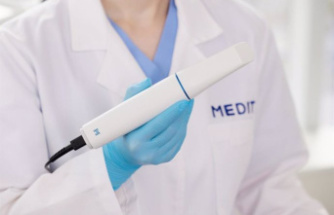Newark Liberty International Airport last year handled 431,595 landings and takeoffs.
Not all of them got to where they were going on time.
Newark Liberty had more departure delays than anywhere in the country last year, with only about 3 out of 4 flights leaving the gate on time, according to a new government report ranking the busiest airports in the U.S.
About the same percentage of Newark's arrivals were on-time, but New York's LaGuardia Airport fared even worse, found the report by the federal Bureau of Transportation Statistics. Only 71.9 percent of its arrivals made it to the gate on schedule.In fact, all three New York metropolitan area airports ranked near the bottom of the nation's 29 busiest airports for arrivals and departures, the analysis showed.
"The issue is that it's unquestionably the world's busiest airspace," said Robin Sobotta of Embry-Riddle Aeronautical University in Prescott, Ariz., and a former duty manager at Sky Harbor International in Phoenix. "Any one delay or change or weather incident really sends those airports into a disadvantage for on-time performance."
Travel expert George Hobica, founder of Airfarewatchdog.com, said Newark Liberty in particular is affected by the performance of United Airlines, the largest carrier serving the airport, which has had its own on-time performance issues.
"All New York City airports are operating at capacities larger than they were built for," he said.
A 15-minute windowOn-time departure performance is based on departure from the gate within 15 minutes of scheduled departure time. On-time arrivals are based on arrival at the gate within 15 minutes of scheduled arrival time. That means if the flight arrives at the gate 14 minutes, 59 seconds after scheduled arrival time, it is considered on-time. As soon as the clock turns to 15 minutes, it's late, explained BTS officials.
Salt Lake City International in Utah was the top-ranked large airport in the country for performance. More than 87 percent of its departures and arrivals were reported on time.
Nationally, the cause of most flight delays last year were outright flight cancellations, or issues considered within the airline's control. Those issues included maintenance or crew problems, baggage loading or fueling, or planes arriving late from another airport, according to the BTS report. Air traffic control issues represented about 24 percent of all delays.
But experts say the New York region may be one of the most complex air corridors in the world, where air traffic controllers who handle Newark Liberty, LaGuardia and Kennedy International airports are confronted daily with overlapping approach and arrival patterns.
The Federal Aviation Administration declined comment abut the issues affecting the New York region. However, Sobotta said the agency, which controls the nation's airspace, may have exacerbated the problems itself when it eased limits last year on the number of hourly flights at Newark Liberty. Those takeoff and landing authorizations, known as slots, were originally put in place in 2008 to reduce congestion and delays and restricted flight operations during peak times to 81 per hour.
Many airlines had pushed for the lifting of the restrictions, seeking to better compete in a market dominated by United. While it resulted in lower fares for consumers, airport officials said traffic at EWR went up by by 4.3 percent over the previous year.
ExpressJet, which reported significant delays involving several of its scheduled flights out of Newark in December, blamed those problems in part on the lifting of slot restrictions. "With no restrictions on how many flights are operated per hour, delays can occur more frequently due to additional air traffic congestion," the company said in a statement. ExpressJet, a regional carrier, operates United Express routes for United Airlines.
A slight improvementThe Port Authority of New York and New Jersey, which operates all three major metropolitan area airports--as well as the smaller Teterboro and Atlantic City International airports in New Jersey, and Stewart International Airport in Orange County--said despite the low rankings in the latest on-time performance report, the percentage of on-time arrivals at both New York airports saw a slight increase last year.
Still, LaGuardia remained the worst in the country for arrivals for both years, despite moving up a percentage point to 71.9 percent of arrivals on-time last year. Outdated and worn, LaGuardia Airport is also often ranked at the bottom in customer satisfaction surveys.
According to Port Authority officials, Newark Liberty was affected by long stretches of heavy winds that often forced landings to a single runway. (John Munson | Star-Ledger file photo)Newark Liberty improved its own departure performance by a percentage point to 75.6 percent of outgoing flights leaving the gate on time last year. However, that still left it worst in the country.
According to Port Authority officials, Newark was affected by long stretches of heavy winds that often forced landings to a single runway.
"Additionally, there was an unusually high incidence of 2016 summer thunderstorms," said a spokeswoman in a statement.
A severe storm that delays incoming planes creates a domino effect, slowing down outgoing flights and delaying connections that can compound quickly in short period of time.
"The Port Authority has made significant efforts to improve movement of planes on the ground, such as installing high-speed taxiways to help move planes faster on and off runways and a traffic metering system at JFK that keeps planes at gates longer to reduce waits on the airfield. Investments by the agency to reduce delays have totaled nearly $200 million," the agency said in its statement.
The Port Authority said it continues to work with the FAA to expedite the implementation of so-called Next Generation Air Transportation System technologies, part of a new national airspace system that will move the nation's air traffic control system from a radar-based system to a satellite-based system. Currently, all Port Authority airports utilize air traffic control technology that was developed in the 1960s.
Sobotta said the NextGen technology, which is designed to make flight paths more direct, saving time and fuel efficient, may address the crowded airspace issues, but not the weather or the "tarmac rules" that have made pilots reluctant to leave a gate unless there is a clear route to takeoff.
Under the tarmac delay rules, the U.S. Department of Transportation has the authority to fine airlines when passengers on domestic flights are stranded on an airport tarmac for more than three hours.
Ted Sherman may be reached at tsherman@njadvancemedia.com. Follow him on Twitter @TedShermanSL. Find NJ.com on Facebook.
Our editors found this article on this site using Google and regenerated it for our readers.













